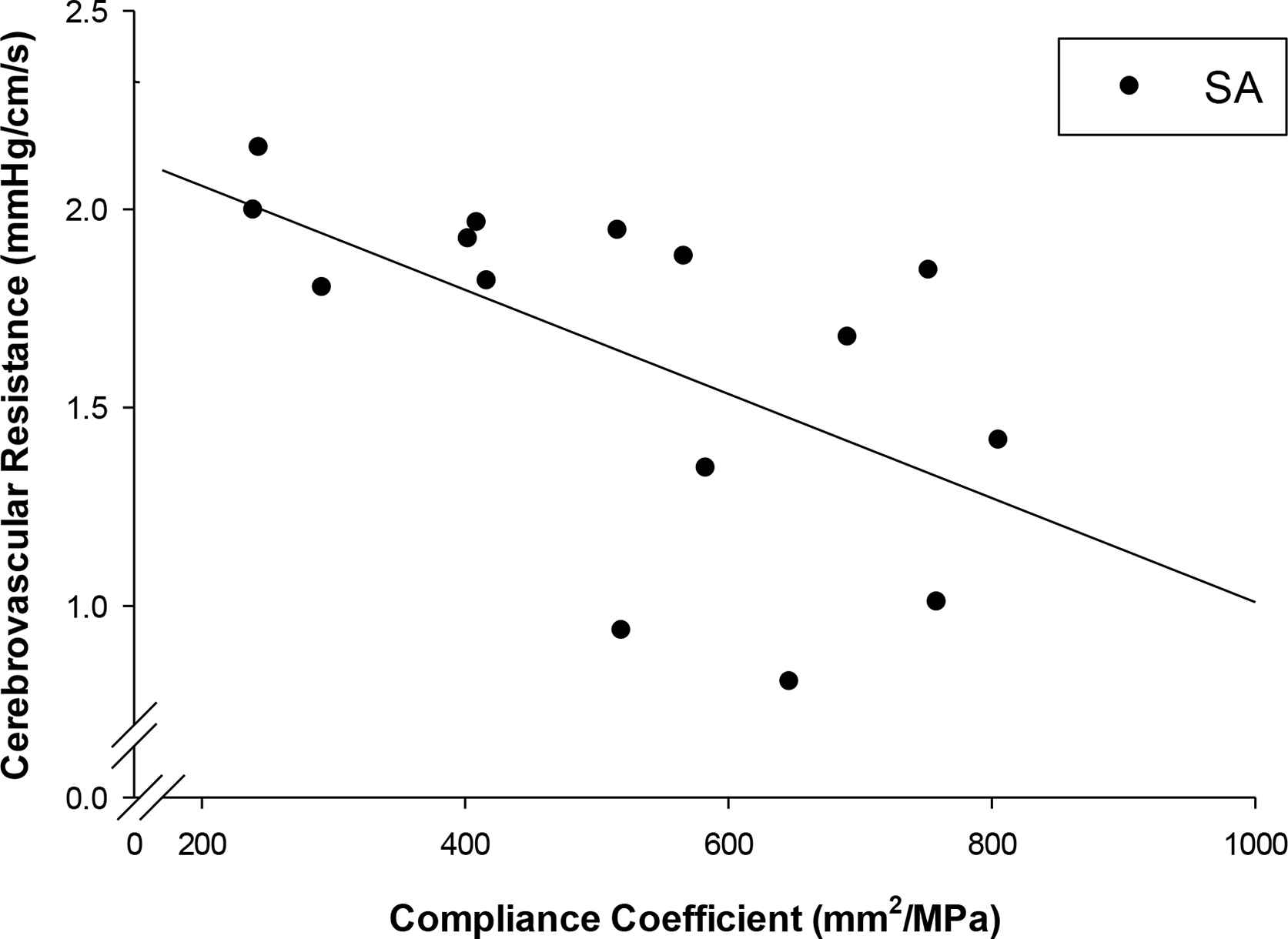PO-14 RELATIONSHIP BETWEEN CAROTID ARTERY STIFFNESS AND ALTERED CEREBROVASCULAR HEMODYNAMICS IN SOUTH ASIAN INDIAN OLDER ADULTS
- DOI
- 10.1016/j.artres.2014.09.020How to use a DOI?
- Open Access
- This is an open access article distributed under the CC BY-NC license.
Objectives: To investigate whether differences exist in common carotid artery (CCA) stiffness between South Asian (SA) and white Caucasian (CA) older adults, and its association with cerebrovascular hemodynamic properties.
Methods: Carotid artery stiffness indicators, including pulse pressure (PP), distensibility coefficient (DC), and compliance coefficient (CC), were measured by applanation tonometry and ultrasound imaging. Continuous blood pressure (MAP), heart rate, and middle cerebral artery blood flow velocity (MFV) using non-invasive transcranial Doppler ultrasound, were monitored in 44 age- and gender-matched SA and CA community-dwelling older adults free of cardio- and cerebrovascular diseases (22 CAs/SAs: 11 M/F in each group, aged 64–82 years). Cerebrovascular resistance index (CVRi) and pulsatility index (PI) were also calculated for evaluation of cerebrovascular hemodynamics.
Results: Carotid artery stiffness was higher in SA compared to CA group, as evidenced by lower arterial compliance (CC=601±282 vs. 789±323 mm2/MPa, respectively, p=0.048), and greater PP (59±18 vs. 46±10 mmHg, respectively, p=0.005). A significant interaction effect between ethnic group and arterial compliance on PP was observed (r2=0.562, p<0.001), indicating that less compliant arteries resulted in higher PP amplitudes in SA compared to CA group. Furthermore, a moderate negative relationship between arterial compliance and CVRi was found only in the SA group (r=−0.574, p=0.025). Correspondingly, CVRi was strongly associated with lower MFV (r=−0.925, p<0.001).
Conclusions: SA group presented greater stiffness and less compliant arteries compared to CA group independent of age and gender. SA older adults appear to have impaired dampening capacity of central arteries to the changes in arterial pressure, thereby increasing the risk of hemodynamic pulsatility transmission into the brain. Consequently, an increase in CVRi might be a compensatory mechanism to protect the cerebral microcirculation, or reflect prior damage, resulting in lower CBF. These findings may aid in understanding the increased risk of cardio- and cerebrovascular diseases in people of SA origin.

Cite this article
TY - JOUR AU - Ikdip Brar AU - Andrew D. Robertson AU - Richard L. Hughson PY - 2014 DA - 2014/11/04 TI - PO-14 RELATIONSHIP BETWEEN CAROTID ARTERY STIFFNESS AND ALTERED CEREBROVASCULAR HEMODYNAMICS IN SOUTH ASIAN INDIAN OLDER ADULTS JO - Artery Research SP - 171 EP - 172 VL - 8 IS - 4 SN - 1876-4401 UR - https://doi.org/10.1016/j.artres.2014.09.020 DO - 10.1016/j.artres.2014.09.020 ID - Brar2014 ER -
